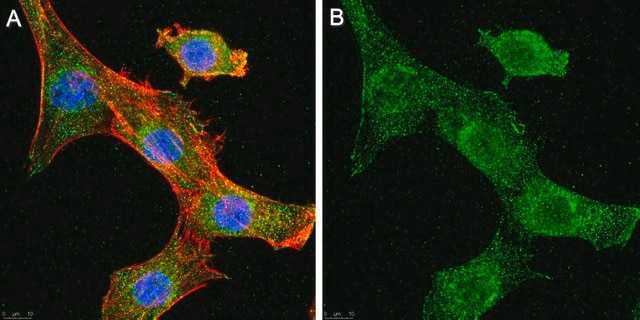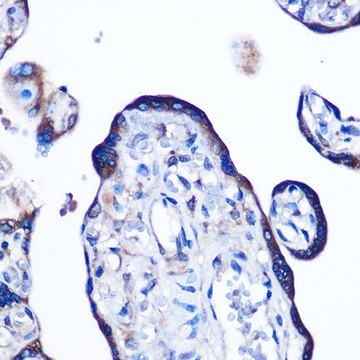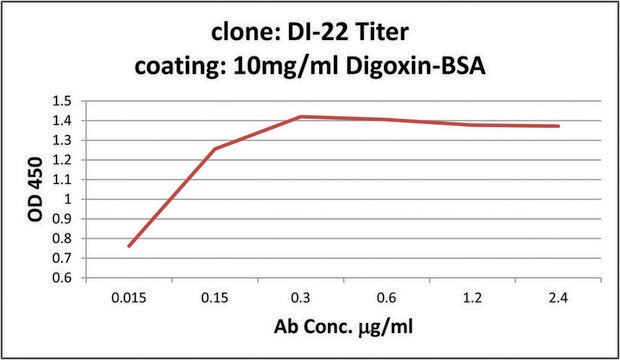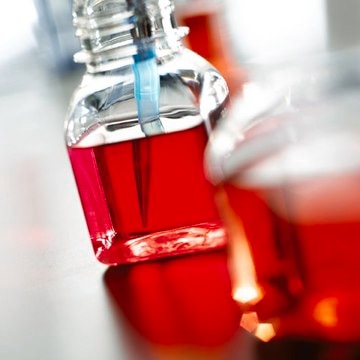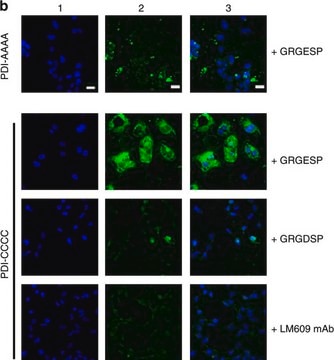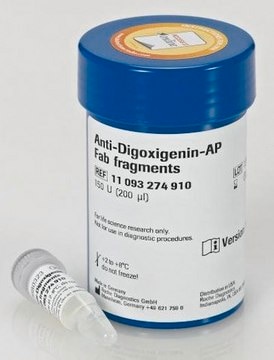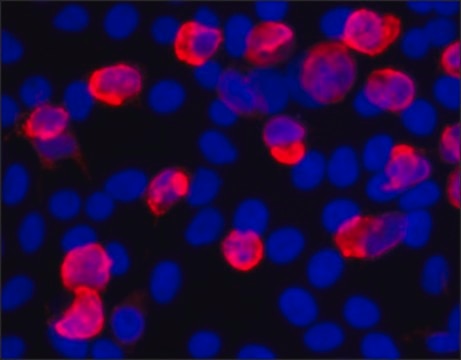MABC1823
Anti-CD271/p75NTR Antibody, clone G4B1
Synonym(s):
CD271, Gp80-LNGFR, Low affinity neurotrophin receptor p75NTR, Low-affinity nerve growth factor receptor, Tumor necrosis factor receptor superfamily member 16, p75 ICD
About This Item
Recommended Products
biological source
mouse
Quality Level
antibody form
purified antibody
antibody product type
primary antibodies
clone
G4B1, monoclonal
mol wt
calculated mol wt 45.18 kDa
purified by
using protein G
species reactivity
human
packaging
antibody small pack of 100
technique(s)
ELISA: suitable
flow cytometry: suitable
immunocytochemistry: suitable
immunohistochemistry: suitable
western blot: suitable
isotype
IgG2aκ
epitope sequence
Extracellular domain
Protein ID accession no.
UniProt accession no.
storage temp.
2-8°C
Gene Information
human ... NGFR(4804)
Specificity
Immunogen
Application
Evaluated by Flow Cytometry in HPCM2 cells.
Flow Cytometry Analysis: 1.0 µg of this antibody detected CD271/p75NTR in one million HPCM2 cells.
Tested Applications
Immunocytochemistry Analysis: A representative lot detected CD271 in Immunocytochemistry applications (Fujii, K., et al. (2022). Cancer Sci. 113(8):2878-2887).
Flow Cytometry Analysis: A representative lot detected CD271 in Flow Cytometry applications (Fujii, K., et al. (2022). Cancer Sci. 113(8):2878-2887).
Immunohistochemistry Applications: A representative lot detected CD271/p75NTR in Immunohistochemistry applications (Fujii, K., et al. (2022). Cancer Sci. 113(8):2878-2887).
Western Blotting Analysis: A representative lot detected CD271 in Western Blotting applications (Fujii, K., et al. (2022). Cancer Sci. 113(8):2878-2887).
ELISA Analysis: A representative lot detected CD271 in ELISA applications (Fujii, K., et al. (2022). Cancer Sci. 113(8):2878-2887).
Note: Actual optimal working dilutions must be determined by end user as specimens, and experimental conditions may vary with the end user.
Target description
Physical form
Reconstitution
Storage and Stability
Other Notes
Disclaimer
Not finding the right product?
Try our Product Selector Tool.
wgk_germany
WGK 1
flash_point_f
Not applicable
flash_point_c
Not applicable
Certificates of Analysis (COA)
Search for Certificates of Analysis (COA) by entering the products Lot/Batch Number. Lot and Batch Numbers can be found on a product’s label following the words ‘Lot’ or ‘Batch’.
Already Own This Product?
Find documentation for the products that you have recently purchased in the Document Library.
Our team of scientists has experience in all areas of research including Life Science, Material Science, Chemical Synthesis, Chromatography, Analytical and many others.
Contact Technical Service